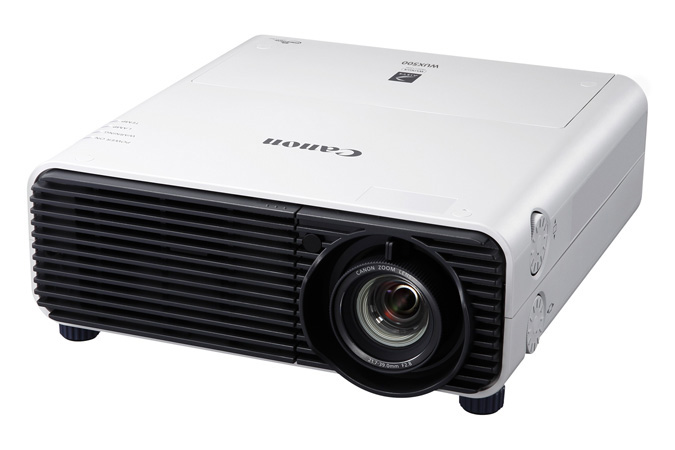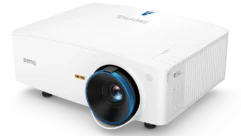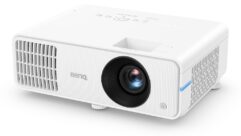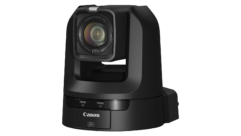

If you’re looking for a feature-packed small projector for installation, then you’ll need to take a look at the newest addition to the compact line of installation projectors from Canon, the REALiS WUX500. While this new projector is small, compact, and quiet, it’s anything but a lightweight when it comes to features. I found the list was surprisingly long.
This projector provides the high-quality color accuracy expected from the Canon LCoS technology. There is even a version that provides a DICOM simulation mode to meet the medical imaging requirements, though I didn’t test that unit.
The Basics
The WUX500 is a native 16:10 (WUXGA) aspect ratio, full-resolution (1920×1200) projector, and provides 5000 lumen light output, in a 13lb. package. At a quiet 37dB at full light output, it makes very little noise. The projector includes analog input connections and includes HDMI and an HDBaseT connector for good measure.
Helping to keep the cost of this projector in line, Canon chose to create the WUX500 with manual lens adjustments including zoom, focus, and lens shift. There is no option for alternate lensing, but the good news is that the lens provided has a variable throw ratio from 1.39–2.51. This wide range accommodates most applications from smaller conference rooms to larger classrooms. The WUX500 lens shift is adjustable in both vertical (0 percent to 60 percent) and horizontal (±10 percent) planes, making a very flexible candidate for installations.
Most projectors come with a zoom lens, but not all zoom lenses are created equal. We can overlook the light lost through a zoom lens. It can be as much as 50 percent. Canon is known for great optics and the lens of this projector lives up to the reputation. In this case, there is only about a 25 percent variation in light output over the entire zoom range.
The advanced capabilities in this projector exceed those in many larger and more expensive projectors. We will touch on a few of the more significant features.
Networking
Canon has provided the WUX500 with both wired and wireless network access. At first glance, there are the obvious uses of remote control and management. However, the network capabilities are really aimed at providing complete collaboration solutions. Canon has included an embedded Network Multiple Projection (NMPJ) software package that provides for managing and sharing content in several configurations. Once the projector(s) are connected to a network (this can be wired, wireless, or a combination), the software can be downloaded to a Microsoft Windows-based computer. What you find is a simple-to-use package that supports four primary use cases.
The simplest of these is Direct Mode. This is the connection of one computer and one projector. The next is Broadcast Mode, allowing one computer to share content with up to 12 projectors. Then there is Meeting Mode, making it possible to configure up to 10 computers and six projectors. Finally, there is a Classroom Mode that allows one computer to control the use of up to 10 computers and six projectors. Both the Meeting and Classroom Modes include a split-screen feature allowing up to four computer images on a single projector screen at one time.
Sharing is easy in any of these modes and surprisingly quick. Graphics look great and full-frame video is acceptable, but can be affected by the amount of other network traffic.
Edge Blending
Until recently, edge blending was limited to the most expensive projectors. To be capable of edge blending, color, brightness, and black level need to be adjustable along the edges of the image within the overlap zone. I was able to create a side-by-side image with two of the WUX500 projectors in a reasonable amount of time. The tools within the projector included markers that made the job easier. While this feature is not for the faint of heart, the manual provides clear instructions and the results were very good.
Stacking
Stacking is the art of using more than one projector to create one very bright single image. Canon has not only provided digital keystone adjustment, but also made the geometry correction controls separate for each corner. Using two projectors, it was possible to create one very bright (nearly 10,000 lumen) image.
The Canon REALiS WUX500 delivers an amazing array of capabilities and a high-quality image in a compact installation projector, and all this for a MSRP of $4,899 (USD).










